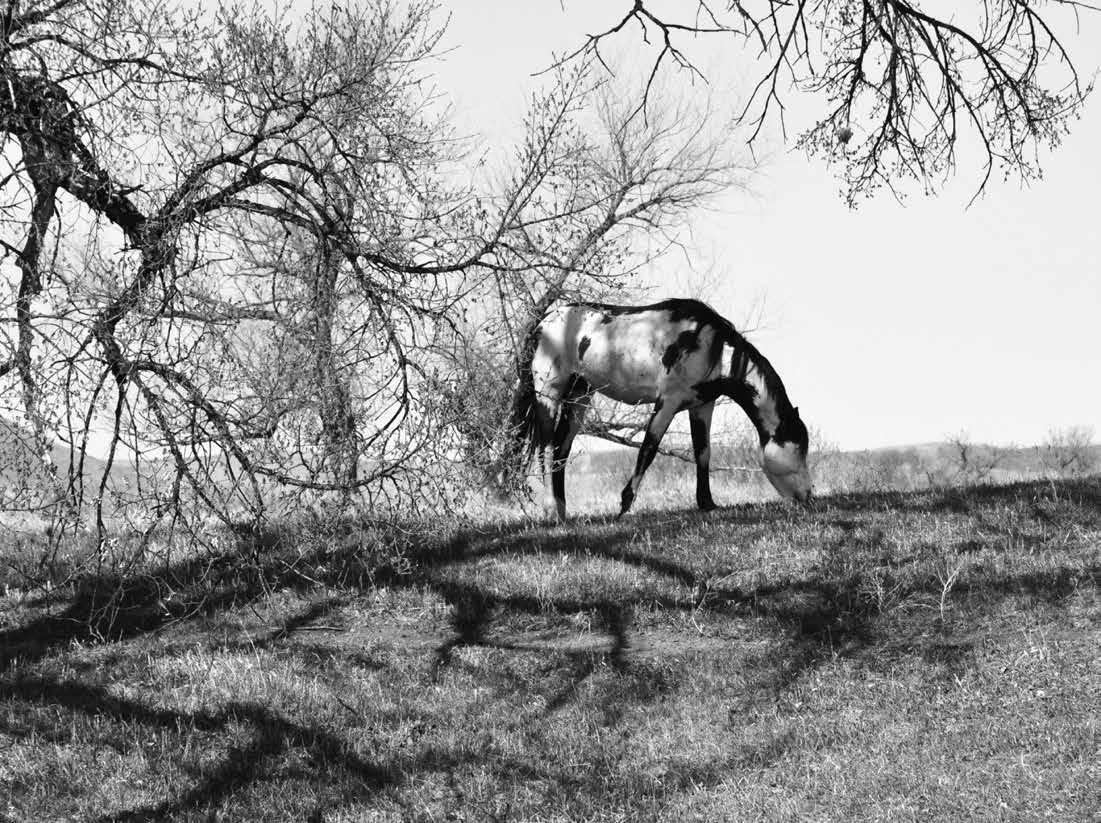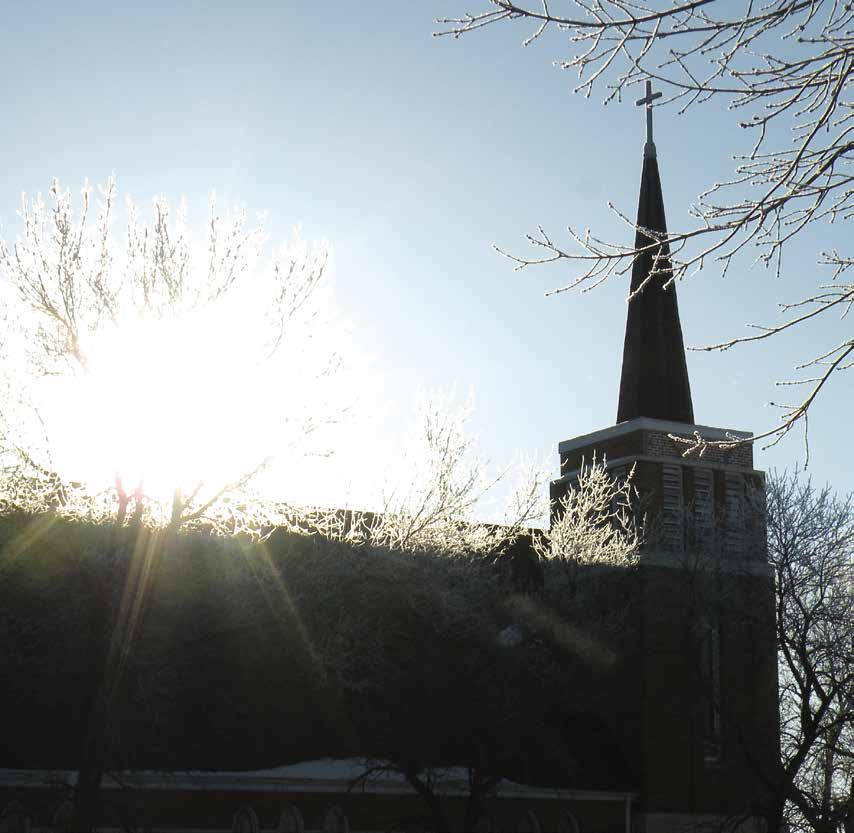
11 minute read
The Puzzlement of Indians: Why North Dakotans Are So Surprised So Often
By Greg Gagnon
From time to time events on or about Indians and reservations impinge on the general population. The media reports a scandal on one of the four reservations in North Dakota, or tribal governments challenge the state government on issues ranging from oil revenues to highway jurisdictions to the state’s obligations. Each time, most North Dakotans and their elected officials act as if the issues involving Native Americans have just suddenly appeared. Too often the state’s citizens, who ought to know better, make statements as if there is no history.
Advertisement
Recently, oil field revenues, a child protection tragedy on Spirit Lake Reservation, and debate about the Violence Against Women Reauthorization Act have gained headlines. Public statements by responsible officials, as well as rants by the irresponsible, reveal profound ignorance about the status of American Indians and their governments. Life would be so much easier if all North Dakotans, including Native Americans, knew and understood the historical past and the legal relationships among the tribal, state, and federal government. Knowing these would allow the present to be explained and solutions to problems to be developed within the realm of possibilities and not in a vacuum.
Ironically, North Dakotans who are products of a North Dakota school should know about—in fact, are required to know about—tribal governments and Native Americans. The North Dakota Social Studies Content and Achievement Standards (K-12) call for high school students to be able to analyze tribal government. According to standard two, students should be able to explain changes in state and federal Indian policy, understand the Indian Child Welfare Act, and explain current issues involving gaming, health care, housing, and distribution of wealth.
To meet standard four, students are supposed to be able to explain tribal sovereignty. Colleges of Education are required to provide a course that teaches prospective teachers about Native American history, government, cultures, contemporary events, and how to teach American Indian students too. These standards, if met, could leave North Dakotans with a much-needed foundation to understand Native Americans, their governments, and what their relationship is to and within the state.
Regrettably, the standards are not being and have not been met. At the University of North Dakota, I taught an introduction to American Indian Studies each semester for nearly fifteen years. This course was available to all students as part of general education and perhaps 180 of them took the course from me or one of my colleagues each year.
As a kind of pre-test, I asked students to name the reservations within North Dakota and to name as many American Indian tribes as they could. Aside from Native American students, over the years about 90 percent of students could neither name the four reservations, nor name more than five tribes in the entire United States. Other general questions indicated similar absence of knowledge about Native Americans.
One research project frequently assigned was for students to survey other adults about their knowledge of American Indians and their governments. Hundreds of people were interviewed by hundreds of students through the years. The primary conclusion was that the thousands of people sampled “knew” mostly negative stereotypes.
This research has been augmented by audience reactions during presentations I have made over the years. The conclusion is clear. Most people do not know the basics of Indian policy and law, history, contemporary issues, and the relationship between states and tribal governments. Over the years, I have compiled a list of common stereotypes. Number One is that Indians receive a check from the government just for being Indians. Hint: This is not true.
Common beliefs revealed in the student research are that reservations are violent, lawless areas and that tribal governments are not “real” governments. Blatantly racist “facts” were frequently reported: “All Indians are thieves, alcoholics, and live on welfare.” “Indians get everything for nothing and live off the government.” “Indians are violent.” “Indians are not subject to laws.” Remember, I am not talking about an ill-informed few but about hundreds. Although racist statements are common, they are not as dominant as erroneous generalizations about the state of Indian country. Many studies in other areas of the United States echo the research my non-Indian university students developed through talking to their fellow students, their families, and people in their hometowns.
One unfortunate result of such ignorance is that it prevents understanding the complexity of tribal government-state-federal relationships and responsibilities. These three sovereigns with unequal and varying resources exist within North Dakota, and each has responsibilities toward American Indians.
For instance, who is responsible for the child welfare system on Spirit Lake Reservation? Funding for child welfare programs usually comes from the federal government and is channeled through the state. The state is supposed to apply for funding, but in North Dakota the state government chose not to. Tribal governments and states are supposed to have working agreements dealing with child welfare, including standards and funding. The federal government is supposed to provide standards and training. The tribal government is supposed to regulate and hire social workers with funding from the federal government. Imagine the cracks that can occur and have!
Actions or inaction by each of the governments contributed to the situation that a child was protected by no one on Spirit Lake Reservation. Social workers on reservations have case loads several times larger than social workers in Bismarck or Cavalier—why is this the case? Who has ultimate jurisdiction? Are there solutions? Yes, but states, tribal governments, and the federal government have to understand the problems and work together on them. Instead, responsible journalists wrote an exposé, which was followed by editorial outrage.
Reactions to the Violence Against Women Act Reauthorization of 2013 (VAWA) illustrate the problems caused by lack of knowledge. Several legislators opposed VAWA because of provisions allowing tribal courts to prosecute a non-Indian living on reservations and having a dating or other relationship with an Indian. Their argument was that White people could not get a fair trial in tribal court. Of course Indians have been tried by federal and state courts since the late nineteenth century. Perhaps these legislators feel that White people are inherently fair and Indians are not.
If Indian governments are not able to enforce the law on non-Indians within a reservation, how are they supposed to have an effective child welfare system? Many Indians are married to non-Indians and, inevitably, some abuses of children occur. Who has jurisdiction? The state? The federal government? It is terribly complicated. Simplistic diatribes about Whites not getting a fair trial or tribal governments being dysfunctional or, as one legislator allegedly said, that tribal councilmen should be beaten, do not offer solutions.
Perhaps a reiteration of the federal-state-tribal government relationships is in order. Please remember that these relationships are far more complicated than I can possibly convey in an essay.
Although I am Indian, these generalizations about the unique relationship of American Indians and their governments is not a description of what I wish it were. I am summarizing federal Indian law and policy as created by United States courts, legislators, and administrations. There are several sources where one can read more about these policies, but I recommend beginning with American Indian Law in a Nutshell (5th edition) by William Canby, Jr., a former federal judge who is not Indian.
Indians are defined by federal law as members (citizens) of a federally recognized tribe. The federal government defines what a tribe is. Citizenship is defined by each reservation government in its constitution which was approved by the federal government. All tribes require that citizens be descended from at least one tribal member. The reservations within North Dakota, like most reservations, include a blood quantum of at least one-fourth tribal “blood.” Blood quantum is a holdover from nineteenth-century racism that even most Native Americans accept, but that is another story. The tribal government and/or the federal government maintain membership rolls.
Native Americans are citizens of three sovereign governments. We are all United States citizens if born in the United States. We are all tribal citizens by meeting the criteria for citizenship laid out in our tribal constitution. We are citizens of the state we live in according to the requirements for state citizenship established by state constitutions and laws. Depending on the situation, we are subject to the jurisdiction of three different sets of courts and laws.
Reservations were and are established by federal law, treaties, and executive orders. The lands are held in trust for the Indians of the reservation by the federal government which has a trust responsibility to maintain and protect the land and resources on behalf of the tribe. This is a major area of conflict, and most tribes have legal departments that work very hard to remind the federal government of its acknowledged requirement. Ultimately, all trust reservation lands are federal lands, which is why they cannot be taxed by any government, state, local or tribal, just as the Grand Forks Air Force Base cannot be taxed.
To complicate land matters, all land within the boundaries of a reservation is not trust land held by either the tribal government or individual Indians. The federal government sold quite a bit of land within reservations to nonIndians and this is private land, mostly subject to state jurisdiction. The federal government retains some reservation land for its uses. Most reservations in North Dakota are 50 percent or more non-Indian–owned so that ownership patterns look like a checkerboard of Indian, tribal, federal, state, private squares.
There are four separate tribal governments and reservations within the borders of North Dakota: Standing Rock Sioux, Spirit Lake Oyate, Turtle Mountain Chippewa, and Fort Berthold. Each is a legal tribe but most contain descendants of several tribes. For instance, Fort Berthold includes Mandan, Hidatsa, and Arikara tribes governed by a single tribal government.
These governments are sovereign according to federal law because they pre-existed the United States. Sovereignty was not given to them by the United States; sovereignty is inherent. Tribal governments have all of the powers of a sovereign government that have not been taken or “voluntarily surrendered.” For instance, tribes make laws and can tax. They cannot have an army, relations with a foreign government, or override federal law.
State governments do not have jurisdiction on reservations or trust land but they have limited jurisdiction for non-Indians and private land. Both state and tribes are expected to coexist and forget histories of land loss, discrimination, and state encroachment. Tribes have been reclaiming their governance rights, some say at the expense of states, since the 1970s.
States have mandated roles for public schools, jurisdiction within reservations for non-Indians with some exceptions, and have to deliver many programs that are statewide. States receive federal funds for roads, schools, law enforcement, social services, and other programs for all of the citizens of the state—how that works out requires a great deal of cooperation between tribes and states.
In many cases, tribes and states have dual responsibilities under federal law. Hunting and fishing regulations, environmental protection, air quality, and even drug interdiction are coexisting responsibilities. State-tribal jurisdictional conflicts are built into the system. Endemic conflict is magnified by the reality that many state officials and legislators do not know the facts about tribal sovereignty.
Tribal governments expect state governments to accept a governmentto-government relationship. Too often, other North Dakotans are not sure what the law is and why tribes are not subject to the state government. They were only taught that states are sovereign, but not that tribes are also sovereign over the same land and people. Often it seems to tribal governments that the state opposes every right the tribes have.
Ignorance exacerbates the potential for conflict because it too often leads to intemperate statements. The history of tribal-state relations abounds with examples of inflammatory speech. Often American Indian leaders respond in kind, particularly with charges of racism. For instance, when a county government does not have a polling station on the reservation, what is the cause?
Many North Dakotans do not understand that tribal government control of law and order is limited. In 1885, the Major Crimes Act assigned all felonies committed on reservations to federal courts; federal prosecutors, using investigations by the FBI, are responsible for Indian law. Tribal and state police have restricted authority. Calls for tribal governments to “do something” ring hollow when the jurisdiction is not there. Domestic disputes, rape, child molestation, and homicide are often not investigated by the FBI, which means that federal prosecutors’ hands are tied and the people suffer.
It would be great if the controversies that explode from time to time led to efforts to evolve practical solutions without political posturing. However, as with scandals involving child welfare within the non-Indian population, solutions require knowledge first, good will second, followed by resources to implement solutions. Many North Dakotans have good will. Resources can be found with good will supporting the search. But unless the first step— acquiring knowledge of the history and legal basis for federal, state, and tribal relationships—is taken, good will and resources will not have a chance. Perhaps all North Dakotans, especially those responsible for making decisions, should seek this knowledge before the next crisis occurs.
Greg Gagnon is retired from the Indian Studies Department of UND but still teaches a course or two at Loyola University of New Orleans. His research includes tribal government issues and federal Indian law and his Culture and Customs of the Sioux (U. of Nebraska Press) recently appeared in paperback. He is a citizen of Bad River Reservation, North Dakota, and the United States.










